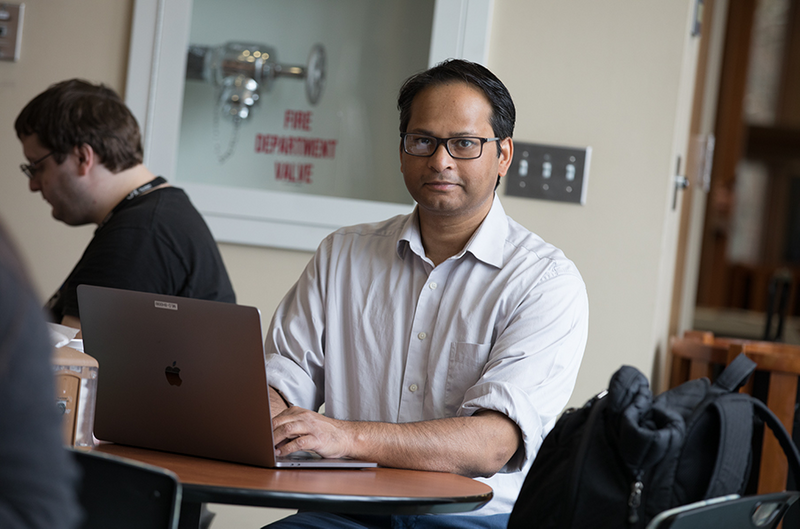Measuring frailty in mice

With aging comes a state of increased vulnerability to adverse health outcomes, and clinicians capture the inter-individual differences through what is known as a frailty index (FI). People are scored based on a set of age-related health deficits, and the higher the FI, the more frail—and more at risk for worse health outcomes—the person is. To study the biology of aging and assess possible interventions, researchers have extended the concept to mice as well. Expert observers are able to accurately score individual mice with an adapted mouse FI, and inter-scorer consistency can be good. But it is a labor-intensive process that depends on inter-scorer discussion and scoring refinement, substantially limiting the scope of such research, especially for long-term and/or multi-site studies.
To address the issue, Jackson Laboratory (JAX) Associate Professor Vivek Kumar, Ph.D., turned to video cameras and computational science. The result, an automated visual FI (vFI), is a machine learning (ML)-based tool that uses video data from an open-field assay, which is basically mouse movement in an open space. Physical measurements, gait attributes and other behavioral features that correlate with FI score and age provide accurate, reproducible and scalable vFI measurements. The vFI is presented in a paper, “A machine-vision-based frailty index for mice,” published in Nature Aging.
Beyond observation
Kumar has previously developed and taught ML algorithms to automatically analyze video data of mouse behaviors and movements such as grooming, gait, response to discomfort, and sleep. The frailty research takes the ML concept one step further, using visual data to capture measurements and details that even an expert observer would not be able to detect. Along with Kumar, the research team included co-first authors Leinani Hession, a post-bacc researcher, Biostatistician Gautam Sabnis, Ph.D., and ProfessorGary Churchill, Ph.D., a leader in the JAX Center for Aging Research. For the vFI, the researchers used 533 mice, both male and female, across a range of ages, and acquired hour-long top-down video of three rounds of testing using open field protocols. Separately, the mice were assessed using a traditional mouse FI by four different expert scorers. The manual FI scores did vary between the scorers—one’s FI scores were consistently high whereas another’s were consistently low, for example—illustrating a disadvantage of the manual method.
The researchers extracted 44 features from the video data, including grooming, gait and postural measures, and engineered features. The latter include those that capture the animal’s shape—morphometric features—as changes in body composition and fat distribution occur with age in both humans and rodents. And in fact, the morphometric features were found to have high correlations with FI score and age. Changes in gait and other movements were also strongly correlated. The video data also revealed that while few items showed notable differences between the sexes, gait measures did exhibit differences between male and female mice.

In manual scoring, only a subset of the items provided most of the information for the manual FI. Kumar and the team therefore also built a classifier for each of the nine items that provided most of the information from manual scoring to predict the score based on video features. Using the collection of features from video data, they then trained machine-learning models to predict age and frailty. Their results showed that they were able to predict age more accurately with their vFI than with manual FI items, indicating that the video data contains additional signals for aging.
Automating the frailty index for future aging research
In a commentary accompanying the paper, aging research and geriatrics experts Elise Bisset and Susan Howlett emphasize the importance of the automated vFI scoring and its potential to advance high-throughput research in aging. In particular, the ability to score large numbers of mice provides a potentially vital platform for testing interventions that may mitigate frailty and facilitate their translation to the clinic.
Kumar points out that the vFI can be further improved moving forward with the addition of new features based on both the reanalysis of existing data and future technological progress. In addition, Kumar has recently received a grant from the National Institute on Aging to investigate how genetic variation influences frailty using genetically diverse mouse populations. Finally, the tool can provide a uniform vFI across studies and across laboratories, leading to community involvement in improving the model and increasing the power of aging research on a large scale.


